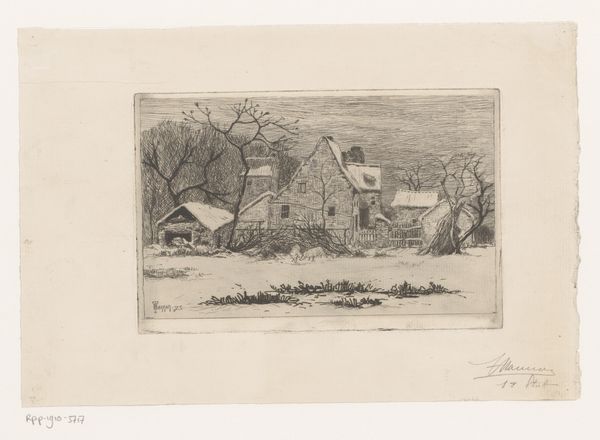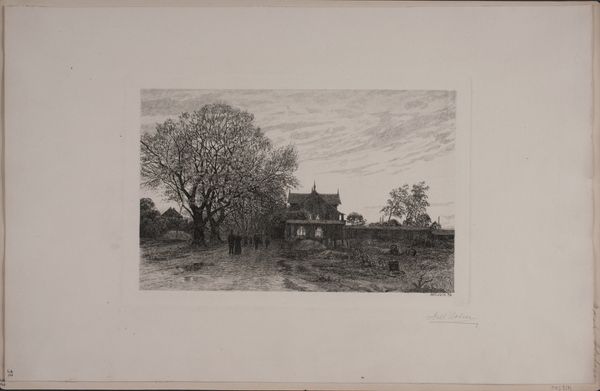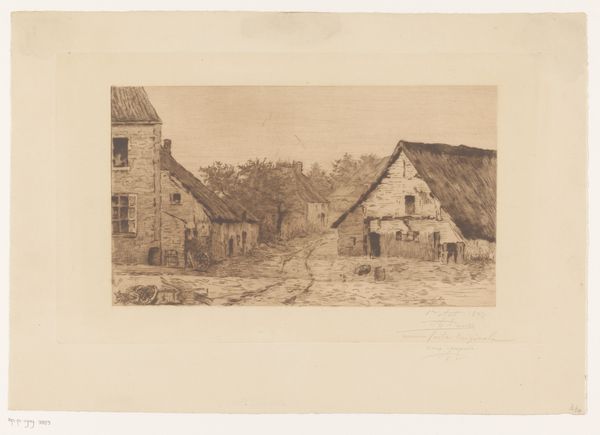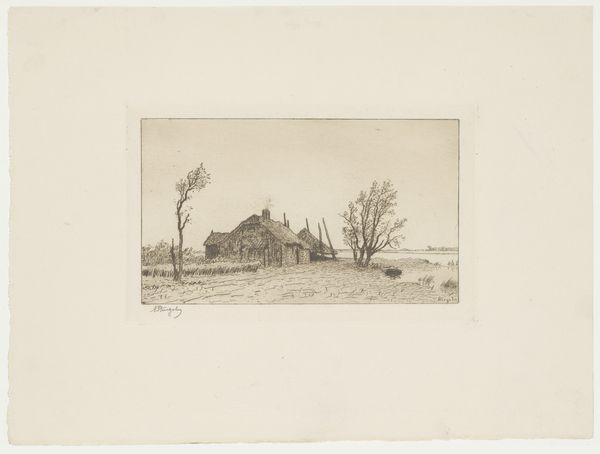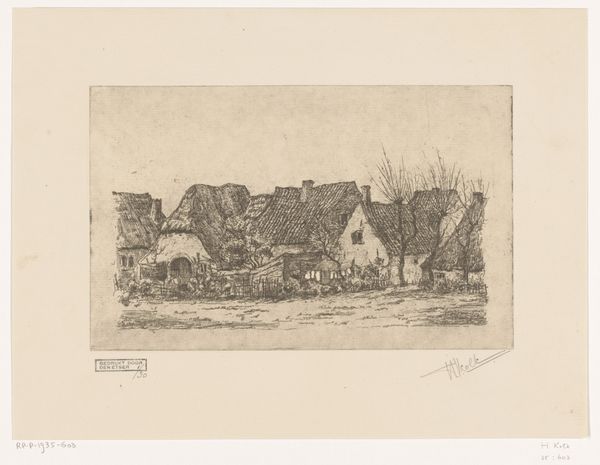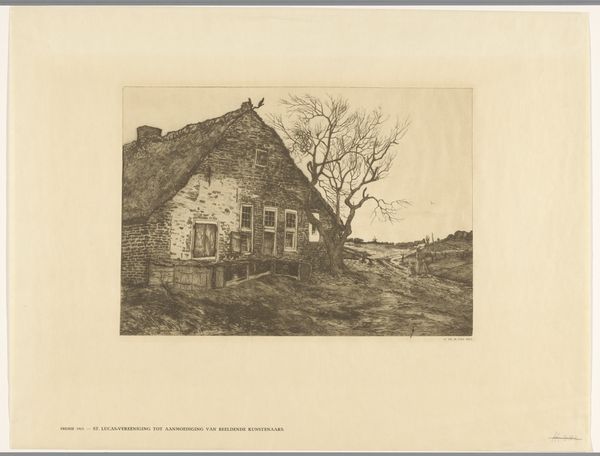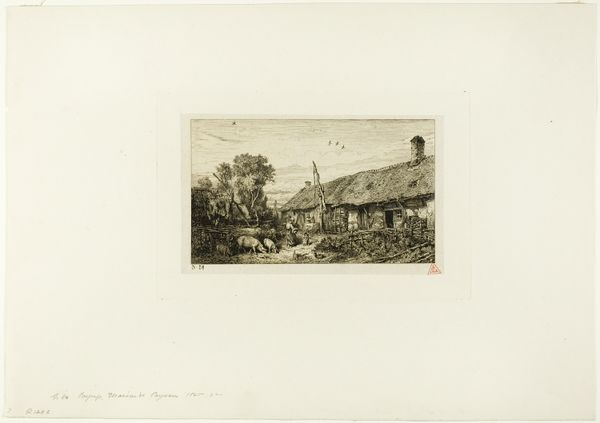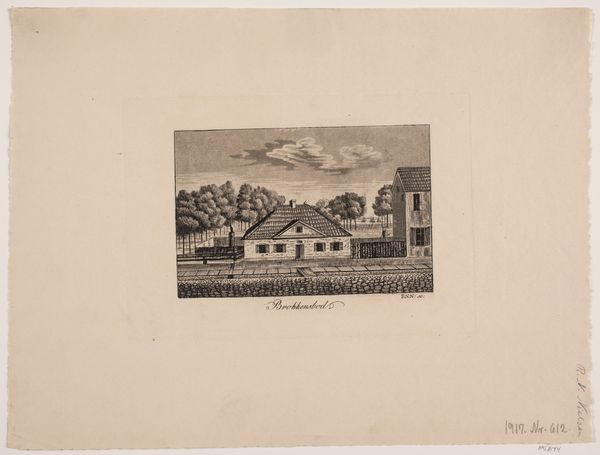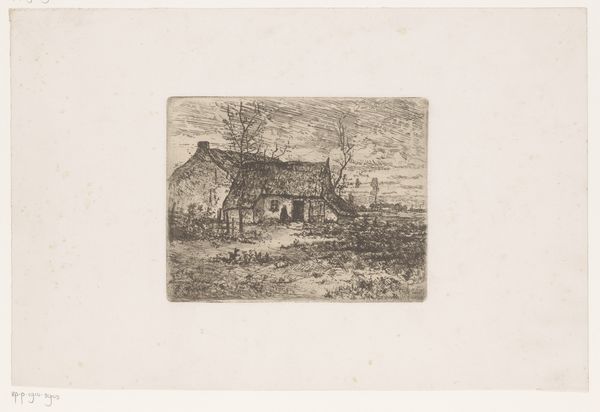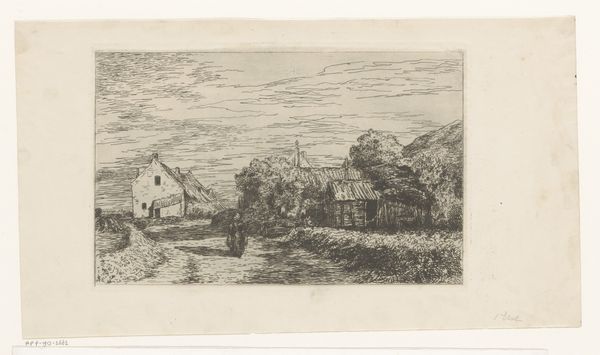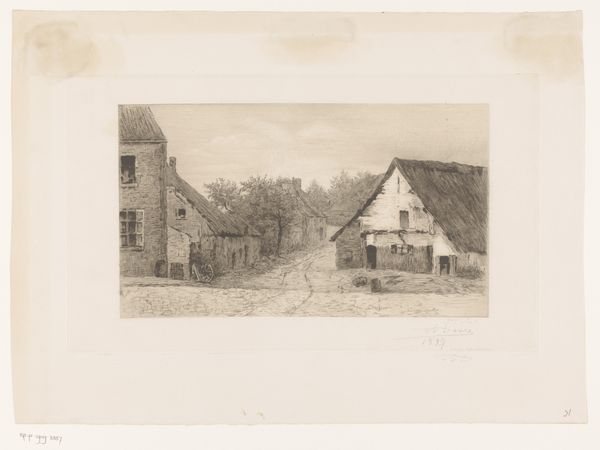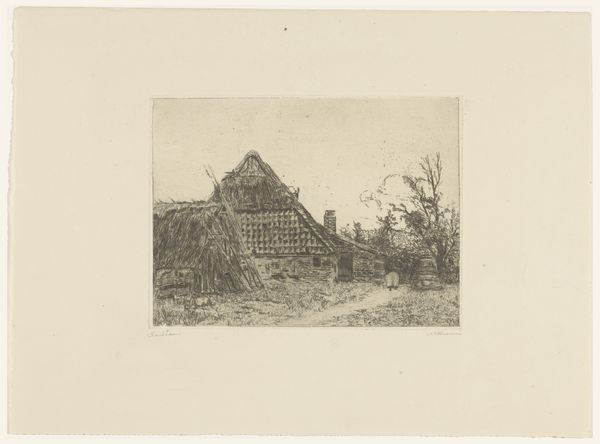
print, etching
# print
#
etching
#
landscape
#
etching
#
genre-painting
Dimensions: height 155 mm, width 234 mm
Copyright: Rijks Museum: Open Domain
Curator: This is a print called "Boerderij aan het water nabij Brussel," or "Farm by the Water near Brussels." The artist is Hendrick van der Hecht, and it was likely made between 1851 and 1901. It's an etching. Editor: Wow, that’s wonderfully moody. It reminds me of old photographs… this almost melancholy rural existence, all in black and white, starkly framed by the architecture of the building and the almost theatrical presence of that old tree. Curator: Yes, the etching technique allows for fine details. Notice the texture of the building's facade. And the placement—a classic compositional device, framing the genre scene with the building to one side, leading our eye to the waterway behind it. We're given visual access to what this agrarian existence affords—material access to resources like water. Editor: Material access, that’s interesting… I was drawn more to how this solitary dwelling mirrors our own human desire for shelter. Look how that bare tree acts almost like a second guardian alongside the home, its branches spread wide in this sort of… gnarled embrace. Curator: It does evoke that sentiment. Thinking about it more materially though, etchings were, compared to painting for example, more easily reproducible, thereby making art more accessible to the middle classes during this period. Editor: And maybe even, unconsciously, to romanticize labor. Look how softened the work being done around this dwelling appears. There are figures, possibly family, bustling, but from here they almost feel placed, actors in a staged idyllic vision of simple living. Curator: Maybe. The consumption of genre-painting increased alongside the industrial revolution. Many found a sentimental solace viewing a simpler time. But this artist, van der Hecht, still had to put in time in labor to create that product. We also see that there may be multiple laborers assisting to fulfill the consumer's appetite for this type of idyllic subject matter. Editor: You are so right. Now that you say it, seeing it through the lens of labor makes its romantic simplicity even more affecting, that duality somehow rendering this image even more powerful for me. Thanks! Curator: It's always helpful to see the conditions of production to better reflect on consumption, no? Thanks for sharing your perspective too.
Comments
No comments
Be the first to comment and join the conversation on the ultimate creative platform.
